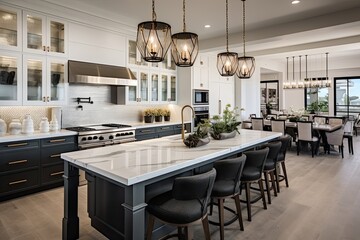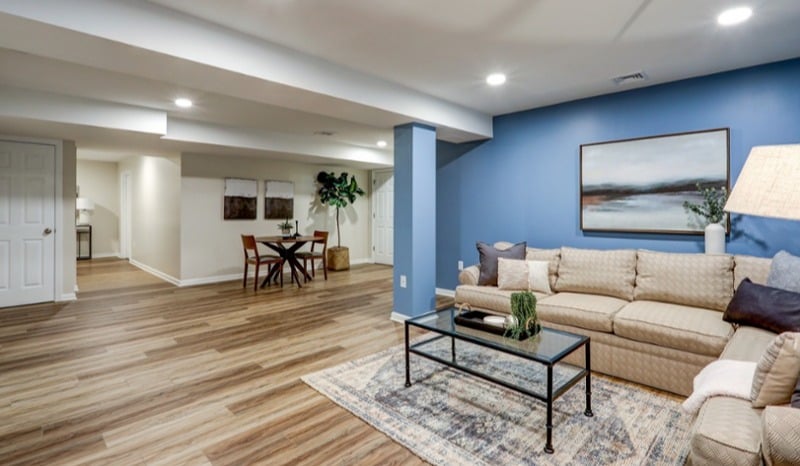The kitchen is the heart of a home and often one of its most significant selling points. Kitchen remodeling is an opportunity to create a space that truly belongs to you.
Remodeling pros generally divide kitchen redos into minor and major categories, with cosmetic refreshes falling under the little category, while layout changes and construction kick a project into the significant tier. Full-scale renovations can take months or even longer to complete. Contact Kitchen Remodelers Atlanta for professional help.
A professional kitchen renovation is a significant investment in both your home and lifestyle. It is essential to hire a kitchen remodeler who has a license and insurance coverage. The best way to find out whether a remodeler is licensed and insured is to ask for proof of liability and workers’ compensation insurance. You can also check with your state’s licensing board to see if their license is in good standing. Additionally, you can look for membership in a national kitchen and bathroom or remodeling contractor association to confirm their credentials.
Whether you’re interested in a minor refresh or a major transformation, it is important to set your goals for the project and share them with your remodeler. This will help you understand the scope of work that will be needed and ensure that the project stays within your budget. Your kitchen remodeler should be able to provide you with an accurate estimate for the cost of the project, as well as any potential changes or additions that may be required during construction.
It’s crucial to understand the difference between renovating and remodeling a kitchen, or any space. Renovating involves changing the interior finishes, such as repainting or installing new flooring. A full kitchen remodel, on the other hand, will transform the layout of the room. This could include tearing down walls, moving plumbing fixtures, and updating electrical systems. A full kitchen remodel is usually more expensive than a renovation, but it can increase your home’s value and provide you with an amazing new living space.
The length of time it takes for a kitchen remodel will vary depending on the scope of the project. A cosmetic refresh, such as repainting and installing new flooring or fixtures, typically takes 2-4 weeks. A standard renovation, including replacing cabinets, resurfacing countertops, and upgrading appliances, can take up to 6-8 weeks. A complete kitchen remodel, which involves layout changes, rewiring, plumbing and electrical work, custom cabinetry, and luxury fixtures, can take up to a few months or longer.
Experienced & Reputable
A kitchen remodel can be a huge undertaking, so it’s important to find a contractor with extensive experience in the industry. Not only will this ensure a high-quality outcome, but it will also save you time and money in the long run. A seasoned kitchen remodeling company will know how to navigate the process from start to finish, and they’ll be able to provide you with a realistic timeline for the project so that you can plan accordingly.
The best way to determine a potential kitchen remodeling contractor’s level of experience is by looking at their portfolio. Ask for photographs of past projects and, if possible, visit the homes to get an idea of their craftsmanship and attention to detail. Additionally, ask the contractors about their favorite kitchen materials and how they balance affordability with quality. This will give you a sense of their design aesthetic and how they might approach your project.
While most homeowners have a general idea of what their dream kitchen looks like, a professional design consultant can help them nail down their vision. Typically found in kitchen and bath showrooms, these experts can use 3D software to show homeowners what their finished product will look like, which helps them make the right decisions during the remodel process. They can also assist with sourcing and selecting products, such as custom textured flooring, acrylic wall cabinets, and PentalQuartz countertops.
When hiring a kitchen remodeling contractor, it’s important to make sure that they have adequate insurance coverage in case of any accidents or injuries during the course of the work. Moreover, it’s important to verify that the team has obtained all required permits for the project. Having this information upfront will prevent any complications down the line and avoid costly fines and delays.
With over a decade of experience, Paula McDonald Design Build specializes in elegant and understated kitchen and full-home interior remodels. Their work has been featured on the CBS and Netflix shows “Queer Eye,” and “Rachael Ray.” The firm’s Flatiron showroom features fully operable kitchens, allowing clients to get a feel for the latest American and European appliances and finishes.
Timely & On-Time
Your kitchen is the heart of your home. It’s also one of the most important rooms in terms of increasing your property value, which is why it’s often a top priority when remodeling your house.
A kitchen remodel is a big project. And when it comes to completing the project on time and on budget, there are a few things you need to keep in mind. First, you need to have a solid schedule in place. It’s important to have a clear plan for when each task will be completed and by whom. This will help ensure that the entire project is finished on time and that no unforeseen issues arise.
Depending on the scope of your project, kitchen remodels can range from cosmetic refreshes to complete renovations. For example, a basic cosmetic refresh may take 2-4 weeks to complete, while a full-scale renovation with layout changes, plumbing relocation, electrical rewiring and custom cabinetry could take 3-6 months.
It’s important to distinguish between the two, as renovating and remodeling have different meanings. Renovating refers to updating a space for better aesthetics or functionality without changing the structure of your home, while remodeling encompasses projects that restructure the property, like adding a sunroom or expanding an existing kitchen.
Affordable
The kitchen is the heart of any home, where meals are prepared and shared. It is important that your kitchen reflects your personal style and is functional for the family. If you are looking to improve your kitchen, it is best to go with a professional kitchen remodeler that will give you the most value for your money. This is why it is essential to do your homework and compare quotes from multiple companies. Once you narrow down your selection, be sure to ask for referrals, check their Better Business Bureau (BBB) rating, online customer reviews and license and insurance information.
The average cost of a kitchen remodel can vary between a minor refresh and a major overhaul, depending on the extent of work. A full-bore renovation that rejiggers the floor plan, changes plumbing fixtures and even tears down walls falls into the “major” category, according to pros. And it is often more expensive because it takes longer and may require alternate cooking arrangements while the project runs its course.
A kitchen remodel can add both aesthetic and financial value to your home, and the benefits will last as long as you own your property. For instance, new appliances will typically be more energy-efficient and can save you money on your utility bills. And replacing outdated cabinetry with a more updated design and quality materials will boost your kitchen’s overall functionality.
Another kitchen remodel benefit is the added storage. Removing old cabinets and adding shelving or a new pantry will give you room to store all your cookbooks, jars of pickles and other kitchen knick-knacks. It is also important to note that remodeling your kitchen can also bring it up to current building codes and safety standards, such as the addition of circuit interrupter outlets.
The most expensive part of a kitchen remodel is the cabinetry, which accounts for 29 percent of the total cost of the remodel. This is largely due to the fact that homeowners want the latest styles and finishes for their cabinetry, as well as better organization and storage features. Luckily, there are many ways to save on your cabinetry costs, including choosing pre-made stock cabinets rather than custom options.



